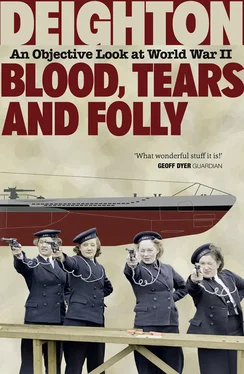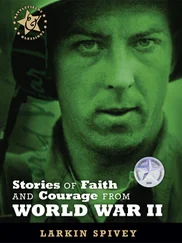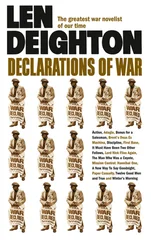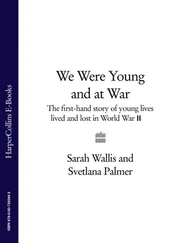The man who with undaunted toils
Sails unknown seas to unknown soils
With various wonders feasts his sight:
What stranger wonders does he write!
John Gay, ‘The Elephant and The Bookseller’
By the end of the First World War Britain was exhausted, financially bankrupt and in debt to the USA. The Empire, having made a selfless and spontaneous commitment to the war, no longer wanted to be ruled by men of Whitehall. British leaders, both civilian and military, had proved inept in conducting a war which, had the United States not entered it, Germany might well have won.
In 1922, Britain formally acknowledged her declining power. Since Nelson’s day Britain’s declared policy was to have a navy as strong as any two navies that could possibly be used against her. Even into the 1890s Britain was spending twice as much on her fleet as any other nation. With the Washington treaty of 1922 such days were gone. The politicians agreed that the navies of Britain, USA and Japan should be in the ratio of 5:5:3. Britain also accepted limitations upon the specifications of its battleships, and promised not to develop Hong Kong as a naval base and to withdraw altogether from Wei-hai-wei, China. In conforming to the treaty, the Royal Navy scrapped 657 ships including 26 battleships and battle-cruisers. One history of the British Empire comments: ‘So ended Britain’s absolute command of the seas, the mainstay and in some sense the raison d’être of her Empire.’ 1
After the First World War, the surrendered German fleet sailed to Scapa Flow, between Orkney and the Scottish mainland. There, in a gesture of defiance, they scuttled all their ships. This provided Germany with a chance to start again with hand-picked personnel and modern well-designed ships, while the victorious nations were patching up their old ships to save money.
The treaty of Versailles stipulated that Germany’s navy must be kept very small but in June 1935, acting without reference to friends or enemies, the British government signed an Anglo-German naval agreement permitting Hitler to build a substantial navy, up to 35 per cent as strong as the Royal Navy, and include battleships, virtually unlimited submarines and eventually cruisers and aircraft-carriers. 2
This notable concession to Hitler’s belligerence encouraged him to ever more reckless moves and deeply offended Britain’s closest ally France. It went against all Britain’s international undertakings and, in grossly breaching the peace treaty, nullified it. The first lord of the Admiralty said: ‘the naval staff were satisfied and had been anxious to bring about an agreement’. Stabilization of Anglo-German naval competition would release RN ships to distant waters. Perhaps the British politicians – and the men in the Admiralty who advised them – believed that showing good will towards the Nazis would bring lasting peace. One suspects that it revealed some calculation in the minds of Britain’s leaders that a more powerful Fascist Germany would keep Communist Russia contained.
Significantly perhaps, the Reichsmarine was renamed Kriegs-marine and the Germans began building immediately. Germany’s four biggest battleships, Scharnhorst , Gneisenau , Bismarck and Tirpitz , which were later to give the Royal Navy so many sleepless nights, were laid down as an immediate result of this treaty. The following year Germany agreed – in the London Submarine Protocol of 3 September 1936 – that it would adhere strictly to the international prize law, which provided for the safety of merchant ship passengers and crews in time of war.
In 1937 came a supplement to the 1935 treaty. A German naval historian, Edward P. von der Porten, has described it as ‘a German attempt to convince the British of sincerity’. The Germans affirmed that they would build no battleships bigger than 35,000 tons. The Bismarck and Tirpitz , then in production, were 41,700 and 42,900 tons respectively. The extra tonnage, explained U-boat C-in-C Karl Dönitz after the war, was for ‘added defensive features’. In fact the extra size was due to Hitler specifying 15-inch guns instead of the previous 11-inch ones.
While German shipyards were producing these impressive warships Britain’s shipbuilding industry was antiquated and inefficient. It had suffered from the strikes and slumps that other British industry knew well. Yet while Britain’s merchant navy, although still large, was in decline, no such decline befell the bureaucrats of Whitehall. In 1914, with 62 capital ships in commission, the Admiralty employed 2,000 officials. By 1928 – with only 20 capital ships in commission, and the Royal Navy officers and men reduced from 146,000 to 100,000 – there were 3,569 Admiralty employees. Although the Washington naval treaty prevented any increase in Britain’s naval forces, there were by 1935 no less than 8,118 Admiralty staff on the payroll. 3
Germany had ended the war without ships or shipbuilding facilities but the creation of a strong navy and a merchant fleet had been decided upon long before Hitler came to power. In the summer of 1929 these plans bore fruit as the ocean liner Bremen snatched the Atlantic Blue Riband from the elderly British liner Mauretania . The following year Bremen ’s sister ship Europa took the record. Both German liners displaced about 50,000 tons, with top speeds of about 27 knots. These products of German shipyards were given energetic publicity by the Nazi propaganda machine. Germany had staked its claim to the Atlantic sea routes and intended to remain there.
On Sunday 3 September 1939 Britain declared war on Germany. Although there were no treaty obligations between Britain and the Dominions, Australia and New Zealand also declared war at once. The Canadians declared war on Germany after Britain (but were later to declare war on Japan before Britain). South Africa followed after some fierce parliamentary debate, and the Viceroy took a similar decision for India seemingly without reference to anyone. Virtually the whole of the Empire and Commonwealth, from Ascension Island to the Falklands, joined the mother country. A newly independent Ireland remained neutral and was represented in Berlin throughout the war by an ambassador accredited in the name of King George.
In the course of time, 5 million fighting troops were raised from these overseas countries, with India contributing the largest volunteer army that history had ever recorded. 4But warships were in scarce supply. The navy was still regarded as the factor which both bound the countries of the Empire and protected their sea routes. So, for Britain’s Royal Navy, the war was a global one right from the first hour of hostilities.
Britain went to war with a Royal Navy that was highly skilled and totally professional, although its officers and men were poorly educated when compared with men of the other industrialized nations. Most of its 109,000 sailors had joined as boys aged sixteen, and most of its 10,000 officers as thirteen-year-old cadets. Steeped in tradition, its ratings wearing curious old uniforms which could not be put on without help, the navy provided a tot of rum each day for every man, and the fleet retained corporal punishment long after the other services had abolished it.
When wartime’s compulsory military service first sent civilians to sea, they regarded this narrow-minded, time-warped community with awe. They took it over, and changed it for ever. Soon the regular sailors with their distinctive rank badges were outnumbered by HO (Hostilities Only) ratings and RNVR (Volunteer Reserve) officers with ‘wavy-navy’ rings on their cuffs. By the middle of 1944 the wartime navy totalled 863,500 personnel of whom 73,500 were WRNS (Women’s Royal Naval Service). The sailors who fought and won the Atlantic battle were in the main civilians.
Читать дальше












